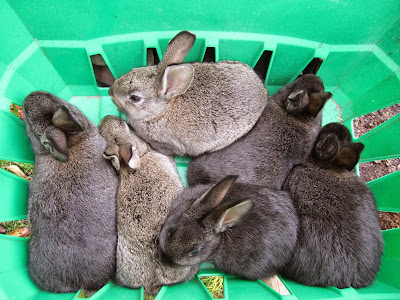We did our bulk shopping and had a busy weekend schedule, so I volunteered to take one for the team and prep 30 Breakfast Burritos myself today. It wasn't all bad - Adrian did the dishes when he got home!
Always with the 'making a mess anyway' mentality, I additionally cooked up 2 packages of bacon for the freezer (to be added to chard and kale stir fries, perogies, baked beans, pea soup etc. over the winter months), and processed a batch of blender salsa to make use of the last of my succession of cilantro plantings, and a few of the more delicate-flavoured red shallots, now that our red onions are all gone. Because I was on my own, I took the shortcuts of buying frozen hashbrowns instead of dicing my own potatoes, and I bought cheddar slices (not processed cheese) instead of shredding a block of aged cheddar, which we prefer - there's more flavour with less cheese.
These food prep and preservation days make me love this table even more. 30 pieces of aluminum foil.....
About 20 of our home-grown Alisa Craig onions....
Whole grain tortillas and the frozen hashbrowns with the least number of ingredients listed (why are there so many ingredients in frozen diced potatoes?)
A slice of cheese, a portion of black forest ham....
Carmelized onions, browned potatoes, and 36 eggs worth of scramble later....
And we have breakfast, from the freezer to the toaster, cooked through in 40 minutes - ideally timed for mornings when we manage to get out of bed for a 6 am workout.
After planting out multiplier onions and shallots to the garlic beds this weekend, and all this cooking, these are all the onions we have left from our harvest.









































